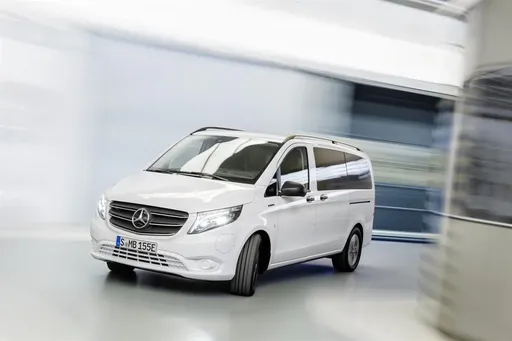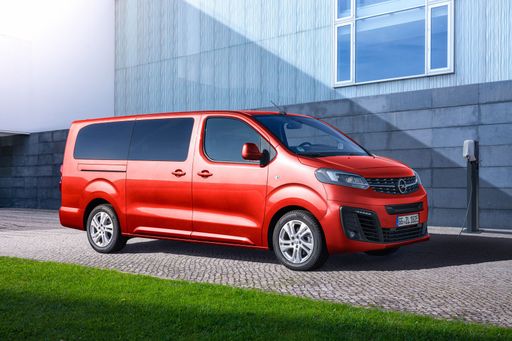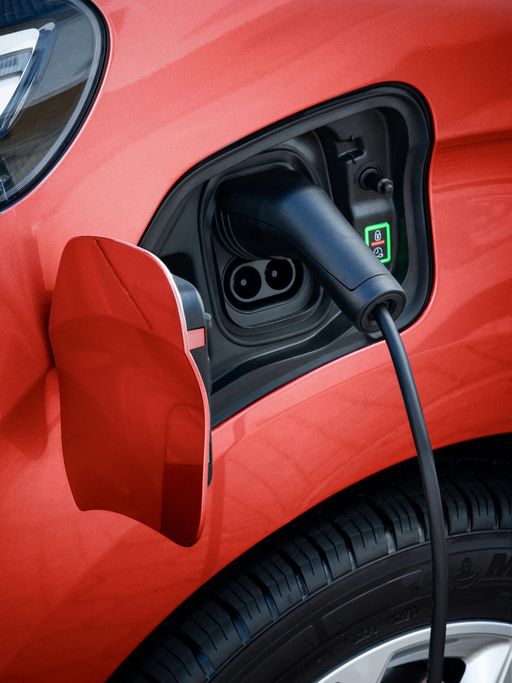Mercedes Vito Bus vs Vauxhall Zafira Life – Performance, range & efficiency compared
Compare performance, boot capacity, efficiency and price at a glance.
Find out which car is the better choice for you – Mercedes Vito Bus or Vauxhall Zafira Life?
Costs and Efficiency:
Price and efficiency are key factors when choosing a car – and this is often where the real differences emerge.
Vauxhall Zafira Life has a minimal advantage in terms of price – it starts at 36000 £, while the Mercedes Vito Bus costs 36300 £. That’s a price difference of around 339 £.
Fuel consumption also shows a difference: Mercedes Vito Bus manages with 6.70 L and is therefore minimal more efficient than the Vauxhall Zafira Life with 7.10 L. The difference is about 0.40 L per 100 km.
In terms of energy consumption, the advantage goes to the Vauxhall Zafira Life: with 24.70 kWh per 100 km, it’s barely noticeable more efficient than the Mercedes Vito Bus with 26.70 kWh. That’s a difference of about 2 kWh.
As for range, the Mercedes Vito Bus performs minimal better – achieving up to 370 km, about 23 km more than the Vauxhall Zafira Life.
Engine and Performance:
Under the bonnet, it becomes clear which model is tuned for sportiness and which one takes the lead when you hit the accelerator.
When it comes to engine power, the Mercedes Vito Bus has a evident edge – offering 237 HP compared to 180 HP. That’s roughly 57 HP more horsepower.
In terms of top speed, the Vauxhall Zafira Life performs distinct better – reaching 185 km/h, while the Mercedes Vito Bus tops out at 140 km/h. The difference is around 45 km/h.
There’s also a difference in torque: Mercedes Vito Bus pulls a bit stronger with 500 Nm compared to 400 Nm. That’s about 100 Nm difference.
Space and Everyday Use:
Cabin size, boot volume and payload all play a role in everyday practicality. Here, comfort and flexibility make the difference.
Both vehicles offer seating for 8 people.
In curb weight, Vauxhall Zafira Life is slight lighter – 1953 kg compared to 2023 kg. The difference is around 70 kg.
In terms of boot space, the Mercedes Vito Bus offers clearly more room – 1390 L compared to 0 L. That’s a difference of about 1390 L.
In maximum load capacity, the Mercedes Vito Bus performs barely noticeable better – up to 4990 L, which is about 90 L more than the Vauxhall Zafira Life.
When it comes to payload, Mercedes Vito Bus slightly takes the win – 1077 kg compared to 914 kg. That’s a difference of about 163 kg.
Who wins the race?
The Mercedes Vito Bus proves to be dominates this comparison and therefore becomes our DriveDuel Champion!
Mercedes Vito Bus is the better all-rounder in this comparison.

Mercedes Vito Bus
Mercedes Vito Bus
The Mercedes-Benz Vito Bus offers a versatile solution for those in need of spacious and comfortable group transportation. Its refined interior is designed to enhance passenger comfort, making it ideal for both business and leisure travel. With a focus on safety and efficiency, it provides a reliable driving experience that aligns with the high standards expected of the Mercedes-Benz brand.
details
Vauxhall Zafira Life
The Opel Zafira Life offers a versatile and comfortable driving experience, making it an ideal choice for families and group outings. Its spacious interior is thoughtfully designed, ensuring ample room for passengers and luggage alike. Modern features and a sleek exterior design give it a contemporary edge while maintaining practicality for everyday use.
details @ Stellantis
@ Stellantis
 @ Stellantis
@ Stellantis
 @ Stellantis
@ Stellantis
 @ Stellantis
@ Stellantis
 @ Stellantis
@ Stellantis

|

|
|
|
|
Costs and Consumption |
|
|---|---|
|
Price
36300 - 55900 £
|
Price
36000 - 53200 £
|
|
Consumption L/100km
6.7 - 10 L
|
Consumption L/100km
7.10 L
|
|
Consumption kWh/100km
26.7 - 26.9 kWh
|
Consumption kWh/100km
24.7 - 24.8 kWh
|
|
Electric Range
248 - 370 km
|
Electric Range
220 - 347 km
|
|
Battery Capacity
60 - 90 kWh
|
Battery Capacity
-
|
|
co2
0 - 228 g/km
|
co2
0 - 186 g/km
|
|
Fuel tank capacity
57 - 70 L
|
Fuel tank capacity
70 L
|
Dimensions and Body |
|
|---|---|
|
Body Type
Bus
|
Body Type
Bus
|
|
Seats
8
|
Seats
8
|
|
Doors
4
|
Doors
5
|
|
Curb weight
2023 - 2739 kg
|
Curb weight
1953 - 2240 kg
|
|
Trunk capacity
580 - 1390 L
|
Trunk capacity
0 L
|
|
Length
4895 - 5370 mm
|
Length
4981 - 5331 mm
|
|
Width
1928 mm
|
Width
2010 mm
|
|
Height
1890 mm
|
Height
1890 mm
|
|
Max trunk capacity
4190 - 4990 L
|
Max trunk capacity
4200 - 4900 L
|
|
Payload
726 - 1077 kg
|
Payload
850 - 914 kg
|
Engine and Performance |
|
|---|---|
|
Engine Type
Diesel, Electric, Petrol
|
Engine Type
Electric, Diesel
|
|
Transmission
Automatic
|
Transmission
Automatic
|
|
Transmission Detail
Automatic Gearbox, Reduction Gearbox
|
Transmission Detail
Reduction Gearbox, Automatic Gearbox
|
|
Drive Type
Rear-Wheel Drive, All-Wheel Drive, Front-Wheel Drive
|
Drive Type
Front-Wheel Drive
|
|
Power HP
136 - 237 HP
|
Power HP
136 - 180 HP
|
|
Acceleration 0-100km/h
-
|
Acceleration 0-100km/h
10.6 - 14.3 s
|
|
Max Speed
140 km/h
|
Max Speed
130 - 185 km/h
|
|
Torque
330 - 500 Nm
|
Torque
260 - 400 Nm
|
|
Number of Cylinders
4
|
Number of Cylinders
4
|
|
Power kW
100 - 174 kW
|
Power kW
100 - 132 kW
|
|
Engine capacity
1950 - 1999 cm3
|
Engine capacity
2184 cm3
|
General |
|
|---|---|
|
Model Year
2024
|
Model Year
2024 - 2025
|
|
CO2 Efficiency Class
G, A
|
CO2 Efficiency Class
A, G
|
|
Brand
Mercedes-Benz
|
Brand
Vauxhall
|
What drive types are available for the Mercedes Vito Bus?
The Mercedes Vito Bus is offered with Rear-Wheel Drive, All-Wheel Drive or Front-Wheel Drive.
The prices and data displayed are estimates based on German list prices and may vary by country. This information is not legally binding.
